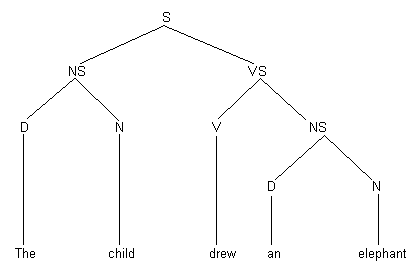|
and,
In this note Duchamp hypothesizes about the creation of an artificial language, which must be a generalization of the natural languages. The logic underlying the construction of the new language has two essential and deeply linked aspects: recursion and abstraction. Regarding the first aspect, the one of recursion, notice that the atomic elements of the new artificial language, i.e. the phonemes, are certain words, taken from a dictionary of a natural language, which Duchamp indicates as prime words (my hypothesis about the meaning of prime words follows in the next paragraph). Therefore, the phonemes of the new languages are words (combination of phonemes) of a natural language: phonemes of phonemes, words of words. A new graphical sign, i.e. a grapheme, composed by means of the "standard-signs" that I think to be (at least related to) the Stoppages (hence a grapheme composed by graphemes) corresponds to each new phoneme of the artificial language. Hence, by synthesis, Duchamp designs an artificial language, which in turn is a recursive generalization of a natural language. The second aspect, the one of abstraction, can be referred to the focus on the syntax of the new language; indeed Duchamp talks about ideal continuity, strict meaning, weighs and measures some abstractions of substantives, of negatives, of relations … whereas the semantics is clearly devalued, when he talks about the absence of pedagogical a sentence construction, and the "figures of speech"peculiar to each language … Looking at the application of the recursive method and at the vocation to generalizing abstraction, it is possible to see a sort of intuition of two aspects that really characterized the linguistic research in the second half of the 900's. Starting from the first aspect, we know that in the so called generative grammars the phrase is constructed by means of recursive grammatical rules, where each symbol can be rewritten (i.e. substituted) by other symbols, which in turn can recursively contain the rewritten symbol itself (see for more information Ghezzi and Mandrioli, 1989, or the classic Grishman, 1986). The production of a
sentence by means of such a grammar is often depicted in a special tree-graph
in which each rewriting corresponds to a new ramification. The following
simple example is taken from the classic Chomsky's Universal Grammar.
An introduction. The starting symbol is S (as Sentence); the other
symbols are: NS (Nominal Syntagm), VS (Verbal Syntagm), D (Determinant),
N (Noun), V (Verb); the grammatical rules are:
This grammar produces simple sentences in the form Subject-Predicate-Object, as in: "The child drew an elephant" (Cook). The corresponding tree-graph is depicted in Fig. 28. Interestingly, we notice that the sole grapheme produced by Duchamp by means of the Stoppages is a tree-graph: the one of Network of Stoppages. As for the second aspect, it is well known that the project of a universal grammar is nothing else than an effort to individuate, by means of progressive generalizations, those grammatical abstract structures shared by all the natural languages. Maturana (1978) precisely points out the importance of the recursion as the universal founding element of each language:
Coming back to Duchamp, the note on the language ends with an important consideration: what is this new artificial language for? Duchamp answers explicitly: it's for describing this picture, i.e. the Large Glass (recall that the notes in the Green Box refer to the design and to the description of the Large Glass). Why is it so? Because this language shares with the Large Glass the nature of progressive and recursive generalization. But, if this language serves for the description of the Large Glass, then it also serves for the writing of the Green Box notes (which are parts of the Large Glass), among which it is just the note itself that describes the language. (Here, we have a first example of those self-referential cycles typical of Duchamp that we shall discuss below.) Indeed we notice that in the Green Box notes Duchamp really uses a strange and stretched syntax, that does not agree with the usual syntactical rules of the natural languages-- we have transitive verbs without objects, hypothetical periods without conclusions, unsolved parentheses, and so on. Thus, the language of the Green Box is perhaps a first approximation of the new language, "representing these new relations: conjugations, declensions, plural and singular, adjectivation inexpressible by the concrete alphabetic forms of languages living now and to come." >>Next
page 1 2 3 4 5 6 7 8 9 10 11 12 13 14 15
|













